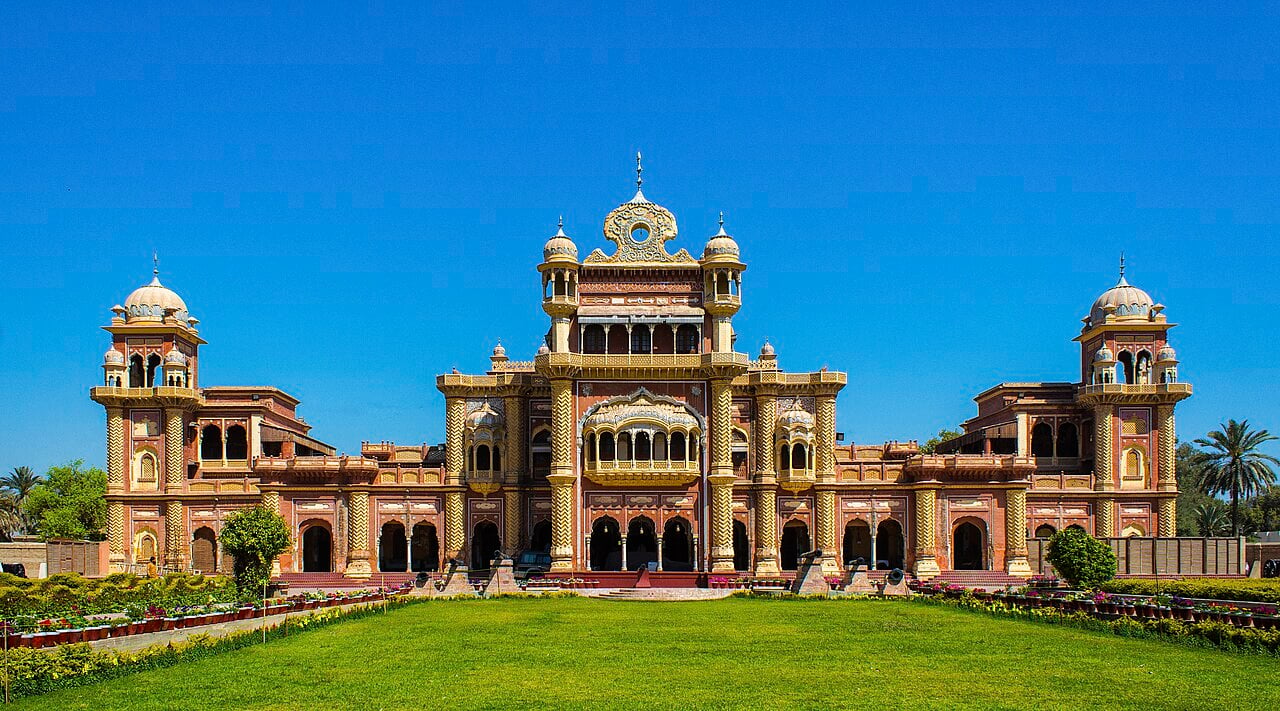Pakistan became independent on 14 August 1947, comprising a significant area of modern-day Punjab, Khyber Pakhtunkhwa (KPK), Sindh, and Balochistan. However, it’s not common knowledge that many major cities joined Pakistan later, let alone the fact that those areas formed more than one-third of Pakistan’s map, and were mainly self-governing states, or riyasats, as we call them in Urdu, Sindhi, and Balochi. These riyasats were independent of Pakistan and included Bahawalpur, Swat, Chitral, Dir, Amb, Federally Administered Tribal Areas (FATA), Lasbela, Kalat, and Khairpur. All of them are now a part of Pakistan. The state of Khairpur, or Khairpur Riyasat, joined Pakistan on October 3, 1955, alongside the Bahawalpur state, and formed a large part of the province of Sindh.
The decline of the Mughal Empire in the early 18th century exacerbated the emergence of smaller empires and dynasties that ruled different areas of the Indian subcontinent. The Kalhora and Talpur Dynasties emerged as two major dynasties in Sindh. However, when the Kalhoras killed the Talpur leader Mir Abdullah Khan, the battle of Halani took place between the two forces, from which the Talpurs emerged as the only powerful dynasty in Sindh, courtesy of Mir Fateh Ali Khan Talpur, who formed his government ruling over the state of Hyderabad, leaving Mirpurkhas to Mir Tharo Khan Talpur, and Khairpur to Mir Sohrab Khan Talpur. Khairpur Mirs became the capital of the state of Khairpur.
Khairpur Under the Talpurs
In 1843, with the arrival of the East India Company, the British took the provincial title away from Sindh and merged it into the Bombay Province or Bombay Presidency. The British supervised the Khairpur state through a minister who held significant powers, almost to the extent of a ruler, and protected its borders. Under the British, the princely state retained a semi-autonomous status.
Prioritizing Education
People remember Khairpur Riyasat as a welfare state. The Talpurs are regarded as leaders devoted to their people. They provided exclusive residences for workers, and dedicated schools for their children. Education in the Khairpur state was compulsory and free of cost, and state-sponsored scholarships to colleges such as Aligarh were the norm. The rulers of the Khairpur state believed that education was the solution to the problems of Muslims. They furthered the scope of the All-India Muhammadan Educational Conference, also known as the Muslim Educational Conference.
Khairpur state was also represented in the first session of the All-India Muslim League in 1906, where the representatives of the princely state brought the attention of leading Muslim leaders to the lack of quality education in Sindh. They offered to host the annual All-India Muslim Educational Conference if they extended it to Sindh. In the same year, founded by and named after Mir Ali Nawaz Naz Talpur, the Government Naz Pilot School was built. Consequently, Karachi hosted the annual educational conference in 1907, followed by another in Khairpur state in 1919. In 1920, the princely state contributed a staggering amount of 1 lakh rupees when the resolution to upgrade Aligarh College into a university was passed. Mir Ali Nawaz Khan Talpur supported ground movements against the British in educational institutes, especially Aligarh University.
The now-timeworn Mumtaz Ground once hosted international hockey tournaments, catering to major players. Theatre plays and stage dramas were also a source of entertainment for the people of Khairpur.
Economic Development
Sixty-two industries once operated in the state, creating employment for the citizens and stabilizing their households. However, having access to vast irrigation water from the Sukkur barrage, Khairpur naturally thrived in the agriculture industries, with textiles, silk, and leather industries adding to the state economy. In 1953, the Economic Development Board (EDB) was established to promote and oversee economic development and ensure equal distribution of developmental benefits.
Present-Day Khairpur
The state acceded to Pakistan in 1947, but retained its princely status, succumbing to the formation of One Unit in 1955, forming a single province of West Pakistan.
“No Bengalis, Punjabis, Sindhis, Pathans, Balochis, Bahawalpuris, or Khairpuris would exist.” Muhammad Ali Bogra famously said, ” The annihilation of these parties would bolster Pakistan’s legitimacy. ” The concept of One Unit faced immense opposition from Sindh, sowing the seeds of Sindhi nationalism.
Khairpur state was the first of the princely states to submit to the vision of One Unit, however, it particularly faced the neglect of its leaders post-One Unit. Unemployment and poverty became rampant in the area, and per capita income decreased drastically. With the non-maintenance of infrastructure, the quality of education dropped. The present condition of the education system is deplorable at best, except for a few noteworthy colleges and universities. The trade and commerce industry has not flourished much either, however, attempts to sustain it are being made, with the establishment of the Khairpur Special Economic Zone, aimed at utilizing the immense date production in the region.
The city doesn’t have much recreational appeal, except for the marvellous Faiz Mahal, built by the founder of Khairpur, Mir Sohrab Khan. The once sophisticated Mumtaz Ground is now a show of ruins. Its only utilization is for political rallies and local night tournaments. Deep in Khairpur city, near the Punj Gulla Chowk is a famous samosa place. The vendor sits near what was once a cinema house, hence his samosas are called cinema ja samosa, in Sindhi (cinema samosas). Needless to say, nothing about that location suggests the existence of a cinema house.

History either tells us about a nation’s progress and inspires us or makes us reflect and reminisce over better times courtesy of inglorious empires. Khairpur is one such story. A welfare-oriented state turning into a neglected city devoid of infrastructure, Khairpur is now a mere memory of what once existed.
If you want to submit your articles and/or research papers, please check the Submissions page.
The views and opinions expressed in this article/paper are the author’s own and do not necessarily reflect the editorial position of Paradigm Shift.
Noorulain Shaikh graduated with an LLB (Hons.) degree from the University of London. She is keen on geographical, sociopolitical, and legal aspects of world affairs. She is a published author of articles concerning international law and regional policy affairs.



